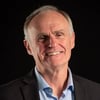For nearly 90 years, OC Tanner (OCT) has helped companies improve employee engagement via meaningful employee recognition. Years ago, we pioneered the use of technology to manage employee recognition and created two SaaS platforms that our clients and their employees use. These are large, complex applications that connect recognition activities to our backend fulfillment and accounting systems.
We invented the employee recognition market and continue to define best practices, but this has not always resulted in IT excellence. How do I know? Because when OCT hired me as SVP and Chief Technology Officer two years ago (at times it seems much, much longer) this is what I inherited:
- IT was well-funded (about 5.5% of revenue) but that money was not generating very good returns
- The prevailing culture in IT was one where people only did what they were told to do. When I talked with the teams and asked their opinions on how to improve system uptime and performance, they had plenty of good, sound ideas. When I asked why these ideas had not implemented, the universal answer was, “We are not allowed.” “Allowed by whom?” “Allowed by our leaders.” “But, if it is the right thing to do, why not do it?” “We only do what we have permission to do.”
- The primary client-facing systems were poorly architected and built, fragile, and hard to change. One of these systems collapsed all by itself once or twice a week. They did not support the business. One of our largest customers needed to send out 250,000 emails from our system to their employees on one day as part of an employee recognition day. Early that day I learned that our home-grown email distribution program could handle about 20,000 emails a day. As you might expect, I was soon on a conference call explaining to this customer what we would do, in the short-term to solve the problem (move our e-mail distribution system to an external service) and also in the long-term so that we wouldn’t have this problem again (rewrite our product’s email service to leverage an external service).
- The business systems were either home-grown (see e-mail distribution system example above) or highly customized, often beyond recognition. We were using a tier one ERP solution that was too customized to upgrade. The CRM system was a kludge. If there was a way to purchase and then misuse technology, OCT had done that with almost everything.
- IT had very low credibility and had taken on the role of order-taker. Whatever someone wanted, IT did – and the business often told IT exactly how to do what they wanted. There was no consulting, rationalization, or impact analysis.
Outside of IT, OCT was in a state of transition. New competitors were entering their market and taking away market share. OCT needed to make bold product moves and those moves hinged on technology.
Something you should know about me is that when I see an IT mess, my pulse quickens. I have a hard time sleeping at night, I obsess about what I would do to fix the mess and I brainstorm with myself on how to create massive technology value. In other words, things were such a mess that I was pretty sure that I had just started my dream job.
A couple of weeks into my new job, I had a good sense of what we needed to change and how – we were in a pretty target-rich environment. With so many opportunities, we needed to focus on the few things that would make the biggest difference. With this in mind, I laid out the following high level plan.
- Commit everyone to the dual role of IT
- Set clear and simple short- and long-range goals
- Involve everyone as we define how to achieve the short-range goals
- Align all our activities to the market
- Modernize methods and technology at every opportunity
- Leverage credibility earned to pursue the long-range goals
Step 1 – Commit Everyone to the Dual Role of IT
To be successful IT must:
- Achieve operational excellence
- Enable organizational strategy
Starting with my staff and then expanding the conversation to all of IT, we assessed how well we delivered operational excellence – the downtime, the service disruptions, the project challenges, etc., and what specific things we did or could do to enable strategy. As we talked about our operational excellence and strategy enablement gaps, it became clear that we needed to establish goals around which we could prioritize our improvements.
Step 2 – Set Clear and Simple Goals
We established a single short-range goal and a single long-range goal. These were:
- Short-range Goal – we never have to apologize for our technology
- Long-range Goal – we deliver technology products and services that amaze our customers
It should be said that in order to achieve these goals, we would need to confront the “permission culture” I had inherited. People will do the right thing if they know what the right thing is. The job of a leader is to define and describe the right things and then get out of the way so that people can do them – no permission required.
Step 3 - Achieving the Short-range Goal
My IT management team and I locked ourselves in a room for a few hours and generated ideas on what needed to change if we were to never have to apologize for our technology (our short-range goal). We got a solid list that covered a whole range of issues. We summarized our ideas into three themes:
- Improve support of the business
- Innovate our products
- Develop the capabilities of a software products company.
We needed to involve as many people as possible in the ideas that would help us achieve our short-range goal. This would help eliminate the permission culture. So we gathered all of the IT managers and brainstormed specific projects we should take on under each of those three themes, and prioritized them.
|
"The job of a leader is to define the right things and then get out of the way so that people can do them" |
Once the prioritized list of projects was shared with the entire IT team, I set them free. If they were doing something on this list, you would not need to ask for permission; just act. My role and the role of my direct staff became to make sure that the teams had what they needed in order to do their work.
I trained the team on Lean and Six Sigma tools so that they knew how to track incidents all the way to the root cause (we had a tendency to just bandage things and move on). I taught them a production change process that reduced downtime. I trained everyone – even the IT operations staff – on Agile methods so that they could think and act incrementally and increase collaboration with the rest of OCT.
Step 4 – Align All Our Activities to the Market
The biggest barrier to our operational excellence was the thinking that everything we did had to be somehow unique. If given a choice, we built, and if we bought, we customized. There was a general attitude across OCT that everything we did created competitive advantage. As a result, everything that we had was overly-complex, expensive and slow.
This thinking was killing us and was a stumbling block not only for IT but for the entire company. We were now competing with technology companies and, in order to transform, had to improve our focus.
To solve this, I introduced OCT’s leadership and management teams my Purpose Alignment Model. In this model, we segregate all of our activities into two general categories:
- The things we do that are both mission critical and create our sustainable competitive advantage.
- The things we do that are mission critical but will not create competitive advantage.
Only the activities in the first category deserve innovation, creativity and uniqueness. For the second category, we would adopt best practices, standardize and simplify.
I learned a long time ago that complexity results in slowness, rigidity and fragility – all things we had in our business systems and our products. Using the Purpose Alignment Model, we could focus on innovation and customizations only on those things that differentiated us in the marketplace. Did our clients choose OCT over its competitors because we were amazing at creating custom workflows in our CRM system? Hardly. Did we create competitive advantage with our home-grown, limited-to-20,000-emails-a-day email distribution system? Clearly not.
This was a hard sell for a company that had done things a certain way for a really long time. But it had to be done. Otherwise, we would fail at both parts of the role of IT – we could never achieve operational excellence if we had to manage so much complexity, and we would never enable strategy if we thought that everything we did created strategic advantage.
While keeping our improvement initiatives rolling, I spent a decent portion of my time talking about market differentiation and the wonders of focus and simplicity.
Step 5 – Modernize Methods and Technology at Every Opportunity
OCT built its product technology as large, complex monolithic applications. There was a lot of unneeded functionality.
Our system requirements are pretty simple. We perform employee recognition activities – nominations, approvals, budgets, tracking, exception handling, et cetera – to the point where it is time for the employee to redeem their award. Redemption is a clean, straightforward eCommerce activity (access a catalog, select an item, order the item).
Over the years, OCT had built their own eCommerce system, including the shopping cart, the catalog, the order entry, and the order fulfillment. One of the applications had 1.2 million lines of code for catalog, item and order management despite the fact that we owned a tier one ERP system that included market-leading catalog, item and order management components. Sigh.
We had to re-architect our products but do so in a meaningful, logical way. We started by defining a set of common components – things like authentication, catalog, client communication, rules, language translation, user search – and then agreeing on what we could re-use from our existing code base, what we needed to create anew, and what we could use from other sources. Then we had to prioritize the sequence in which we did the modernization work.
Since our first goal was to no longer apologize for our technology, we prioritized based on which parts of our technology were the most brittle, fragile and rigid. We then worked down the list of projects. As we did this, our product performance improved.
We took this same approach with our business systems. When our voicemail system collapsed, I learned that we had not upgraded or applied any patches to our phone and voicemail systems since 1997 (I am not kidding – 1997!) This created an opportunity for modernizing our business systems, including phone, contact center, network, CRM and ERP. And keeping Purpose Alignment in mind, as we modernized our business systems we eliminated a lifetime of customizations.
Step 6 – Leverage Credibility Earned to Pursue the Long-range Goals
Over time, we started to see real results. As service levels rose our credibility grew. Our relationship with the business was getting better and I sensed there was a meaning to our work that had been absent before. And when we did experience an outage, we tracked it to root cause, solved the underlying issues and never dealt with them again.
Along the way, the IT organization talked and acted more strategically. We talked to our business partners about competitive advantage and product differentiation. We measured our work and shared our results. We communicated much better. I started summarizing the status of all our projects into a visual chart and sharing that with the entire company.
In order to socialize the changes we were making, we held something called "Big Demo Day" once per quarter. During "Big Demo Day," members of the IT team give short (no more than 5 minutes) working demonstrations (no slideware allowed) of the technologies we were about to unleash. We held monthly lunch meetings on topics such as “containerization,” “advanced analytics,” hyper-converged infrastructure” and “continuous deployment.”
We created the impression (and the impression was coming true) that we had our act together, that we were getting OCT ready for the future. With our new credibility, we started to push the types of changes we had made in IT out to the rest of the company. We spent time with the sales teams so that we were more in tune with what the market was demanding. We spent time with our client services team so that we were more in tune with what our clients were demanding. And, we talked more and more about how OCT created competitive advantage. We needed to form these relationships and have this insight if we were to deliver on our long-range goal: deliver technology and products that amaze our customers.
As IT became more credible and strategic, my role on the executive team changed. I was not the IT member of the team, I was the strategic member of the team and became the voice that defined our role in the marketplace and our future. This meant that I was tasked with defining our product roadmap in addition to our technology roadmap.
Looking Ahead
There remains much to do – it can take a lot of time to transform IT and then a company. But, it has gone well. A few vestiges of our permission culture remain but they are the exception. The vast majority of the IT team is on-board with the changes and we have upgraded the IT team without having to get rid of many people. Most people want to do the right thing and will step up if they are inspired by the vision and don’t have too many barriers in the way.
I measure our improvement in a number of ways but my most important measure is the following:
In mid-September, the executive team presented to our board of directors the five elements of our short- and long-range growth plan. Four of the five elements originated in and are being led by IT. Not bad for a team that two years ago were order takers and the gang that could not shoot straight.
Lessons Learned
I have been involved in a number of IT and business transformations. I like to think that I brought to bear at OCT the lessons I have learned. My short list of lessons includes:
Confront reality. Be honest about the issues and opportunities
Fix processes, not people. If something goes wrong, improve the process. It is rare that the problem lies with people and so blaming people rarely fixes anything. Even worse, blaming people makes them defensive and unwilling to embrace change.
Prioritize rigorously. In his book, Essentialism, Greg McKeown, describes this process: Find a quiet time and write down the most important things you have to get done. Now, prioritize those into the top six things. Next, label them from highest to lowest priority (#1, #2, . . . #6). Now, take your pen and cross off numbers 2-6. If #1 really is the most important thing – focus on getting it done before you work on anything else. At OCT, there were lots of things we could have done and sometimes made the mistake of taking on too much. We made real progress when we focused on the critical few.
Lead with humility. Place purpose over personal agenda. Everything we did and still need to do requires high levels of trust between me and my team, between me and my executive team peers, between me and my boss and between my team and the rest of the company. One of the fastest ways to destroy trust is to put personal agenda over purpose. The reason we did what we did, the reason I was being strategic was because it would help the company succeed. It did not matter whether, in the process, I succeeded.
Link every action to why. People will do amazing things if they understand why their work matters
Celebrate and appreciate. Make a strong, concerted effort to express sincere appreciation for the work being done. And when things go well, celebrate. Once a month, I get the entire IT team together and we talk through our progress, plan our next steps and celebrate our success. Given the rather large size of my team, this is my best chance to communicate my vision and style to every person on the team.
Have fun. Progress and improvement are wonderful things so enjoy the journey.


Written by Niel Nickolaisen
Niel Nickolaisen is Director of Enterprise Integrations at Utah State University and is leading the implementation of the processes and systems to enable comprehensive constituent lifecycle management at the university. The co-author of The Agile Culture: Leading Through Trust and Ownership and Stand Back and Deliver, he is as an advisor to several technology start-ups and sits on the board of a start-up accelerator. Previously, Niel held several technology and operational executive positions. Nickolaisen has an MBA from Utah State University, an M.S. in engineering from MIT, and B.S. in physics from Utah State University.



